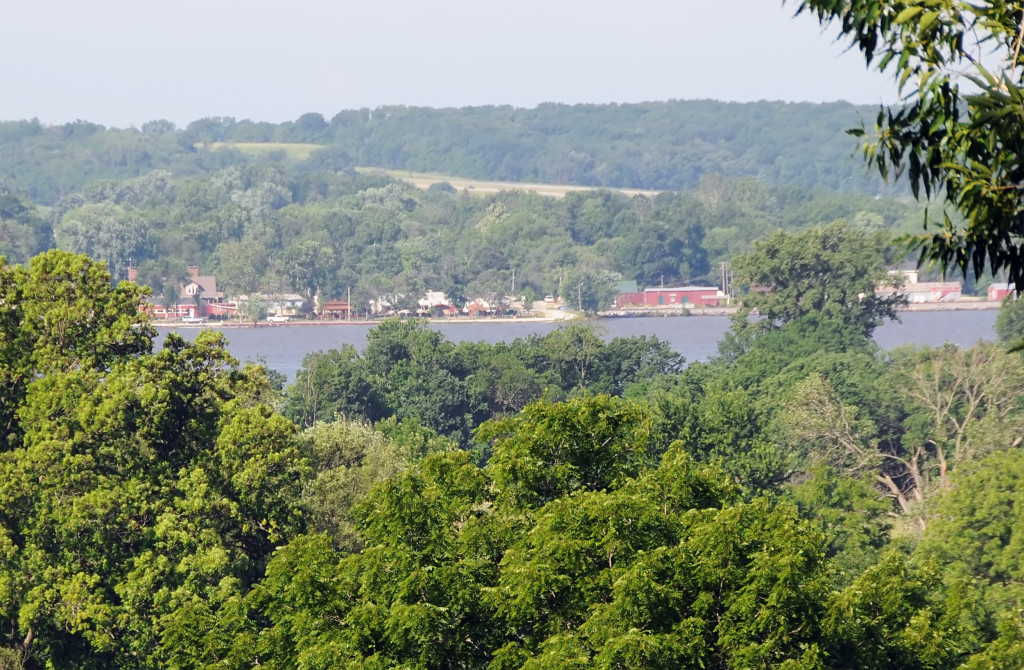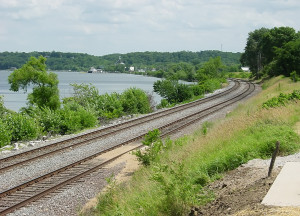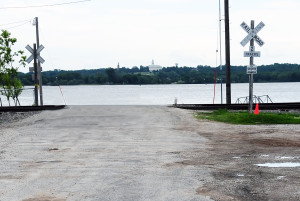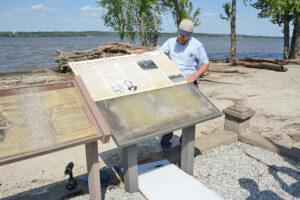Montrose, Iowa

The first LDS members to settle in Montrose did so in May 1839. The Saints had been expelled from Missouri and many of them had taken refuge in Quincy, Illinois for the remainder of the winter. Among the first to move to Montrose from Quincy was Brigham Young and his family. They moved into one of the barracks’ rooms in the deserted Fort Des Moines and were shortly followed by the families of John Taylor, Wilford Woodruff, Orson Pratt, and others.1 They each lived in the abandoned fort until later moving to Nauvoo.
While residing at the fort, the miraculous healing of Brigham Young, Elijah Fordham, and many others took place in July 1839. Brigham Young described the event as “a day never to be forgotten.”2

Montrose also served for a very short time as a refuge for the Prophet Joseph Smith. In June 1844, Joseph, Hyrum, and Porter Rockwell crossed the Mississippi River to Montrose with plans to flee to the west where Joseph had foreseen that the Saints would grow to be a great and mighty people. Due to the pleas of his wife and others, he returned across the river to Nauvoo where he and his brother Hyrum were taken to Carthage for trial and then killed by a mob.

After the completion of the temple, the Saints left Nauvoo and began their trek west. The last group to leave were forced out of Nauvoo in the fall of 1846. They were ill equipped and did not have the necessary provisions to make the difficult journey. Near Montrose, the impoverished Saints experienced what has become known as “The Miracle of the Quail.” On October 9, 1846, several flocks of quail flew into their camp and provided them with sufficient food that about 640 people were fed and filled.3 The miracle is reminiscent of the miracle that the Lord performed for ancient Israel during their exodus our of Egypt under the leadership of Moses.4
SOURCES
1 Stanley B. Kimball, “Nauvoo West: the Mormons of the Iowa Shore,” BYU Studies, (Winter 1978), 136.
2 Brigham Young, Manuscript History of Brigham Young (Salt Lake City: LDS Church Archives).
3 Kimball, 142.
4 See Exodus 16:12-13.
Map & Directions
Photos



Articles & Resources
Brigham Young’s Account of Being Healed
Author(s): Brigham Young
Type: First-person account
Source(s): Brigham Young, Manuscript History of Brigham Young (Salt Lake City: LDS Church Archives).
Joseph arose from his bed of sickness, and the power of God rested upon him. He commenced in his own house and dooryard, commanding the sick, in the name of Jesus Christ, to arise and…
Thomas Bullock’s Account of the Miracle of the Quail
Author(s): Thomas Bullock
Type: First-person account
Source(s): Bruce A. Van Orden and Brent L. Top, eds., The Lord of the Gospels: The 1990 Sperry Symposium on the New Testament (Salt Lake City: Deseret Book Co., 1991), 34.
This morning we had a direct manifestation of the mercy and goodness of God, in a miracle being performed in the camp. A large, or rather several large flocks of…
Alexander L. Baugh, “Remembering the Mormons in Lee County, Iowa: Marking the Past in Montrose and Keokuk,” Mormon Historical Studies, Fall 2003.
Stanley B. Kimball, “Nauvoo West: the Mormons of the Iowa Shore,” BYU Studies, Winter 1978.
